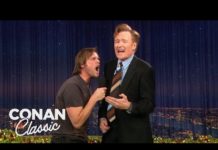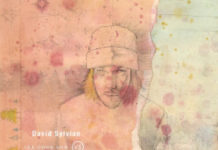By Mitch Rice
Hip-hop emerged from the streets of the South Bronx in New York City during the 1970s. It was a form of expression for marginalized communities, combining music, dance, art, and social commentary. Often played in the same urban neighborhoods, basketball provided a parallel path for self-expression and escape from poverty. Both hip-hop and the NBA share roots in these communities, where creativity and competitive spirit were essential for overcoming adversity.
As hip-hop grew in popularity, its rhythms and stories began to influence many aspects of culture, including sports. By the 1980s, rap songs like Kurtis Blow’s “Basketball” and Sugar Hill Gang’s “Rapper’s Delight” had begun to draw explicit connections between the two worlds. This set the stage for a lasting bond that would see hip-hop become an integral part of the NBA experience.
Relationship Between Hip Hop and NBA
The relationship between hip-hop and the NBA became particularly visible in the 1990s with the rise of players like Allen Iverson. Iverson’s style—baggy clothes, tattoos, and cornrows—mirrored the hip-hop culture of the time. His influence went beyond the court, impacting fashion and attitudes within the league. The NBA initially pushed back with dress codes, but the cultural impact of hip-hop was undeniable and eventually embraced.
Shaquille O’Neal further exemplified this connection. Known for his dominant presence in basketball, Shaq also ventured into hip-hop, releasing rap albums and collaborating with artists. His dual success in both arenas highlighted the growing synergy between basketball and hip-hop.
Betting also found a place here, with fans often using platforms that offered special incentives, like the bet365 bonus code, to enhance their experience of games and music.
Similarly, Damian Lillard has made a name for himself as an NBA superstar and a respected rapper named Dame D.O.L.L.A., showcasing genuine talent and bridging the gap between the two fields.
Influence on Fashion and Identity
Hip-hop’s influence on NBA fashion is evident. Players have adopted styles directly from hip-hop, such as wearing designer streetwear and flashy jewelry.
Allen Iverson’s introduction of hip-hop style to the NBA has evolved with players like LeBron James and Russell Westbrook, who use fashion to express their personalities and connections to the culture. The fusion of styles has created a unique fashion genre that reflects both athletic functionality and the edginess of hip-hop.
The crossover also extends to business ventures. Jay-Z’s involvement with the Brooklyn Nets as a minority owner and his founding of Roc Nation Sports, which represents NBA players, exemplifies the deep business ties between the two worlds. These ventures show how hip-hop and the NBA have grown together, influencing each other economically and culturally.
Music and Motivation
Hip-hop music is omnipresent in the NBA, not just in arenas but also in players’ lives. It’s common to see NBA stars warming up to their favorite rap tracks, and hip-hop anthems often accompany game highlights.
The beats and rhythms of hip-hop energize players and fans alike and reflect the players’ journeys, struggles, and triumphs.
Rappers frequently reference NBA stars in their lyrics, drawing parallels between their success and the achievements of basketball players. The mutual admiration has strengthened the bond between hip-hop and the NBA, with artists like Drake and Kendrick Lamar often seen courtside at games, further blending the lines between fan and participant.
Shared Platforms for Social Change
Hip-hop and the NBA have become powerful platforms for social justice and activism. Players and artists use their influence to address racial equality and economic disparities. This shared commitment to social change highlights how both arenas can serve as catalysts for broader societal impact.
For instance, in 2021, Kawhi Leonard, known for his quiet demeanor, executive-produced an album called “Culture Jam,” featuring prominent rap artists. Part of the album’s proceeds went to the Mamba and Mambacita Sports Foundation, honoring Kobe Bryant and his daughter Gianna, demonstrating how the NBA and hip-hop collaborate for greater causes.
Global Reach
The influence of hip-hop and the NBA has extended beyond American borders. The international appeal of NBA stars and the universal language of hip-hop have brought these cultures to a global audience.
The league’s global reach is evident in the diversity of its players and the worldwide popularity of hip-hop music, showcasing how these two American-born phenomena have become integral parts of global culture.
Conclusion
The relationship between hip-hop and the NBA is a dynamic and evolving partnership. Rooted in shared experiences and mutual admiration, it has shaped the culture of basketball and music alike. From fashion and style to music and activism, the synergy between these two worlds continues to grow, leaving a lasting impact on fans and players. The bond between hip-hop and the NBA is a testament to the power of cultural exchange and the enduring influence of both art forms on modern society.
Data and information are provided for informational purposes only, and are not intended for investment or other purposes.






